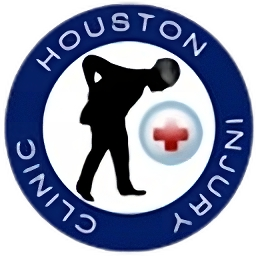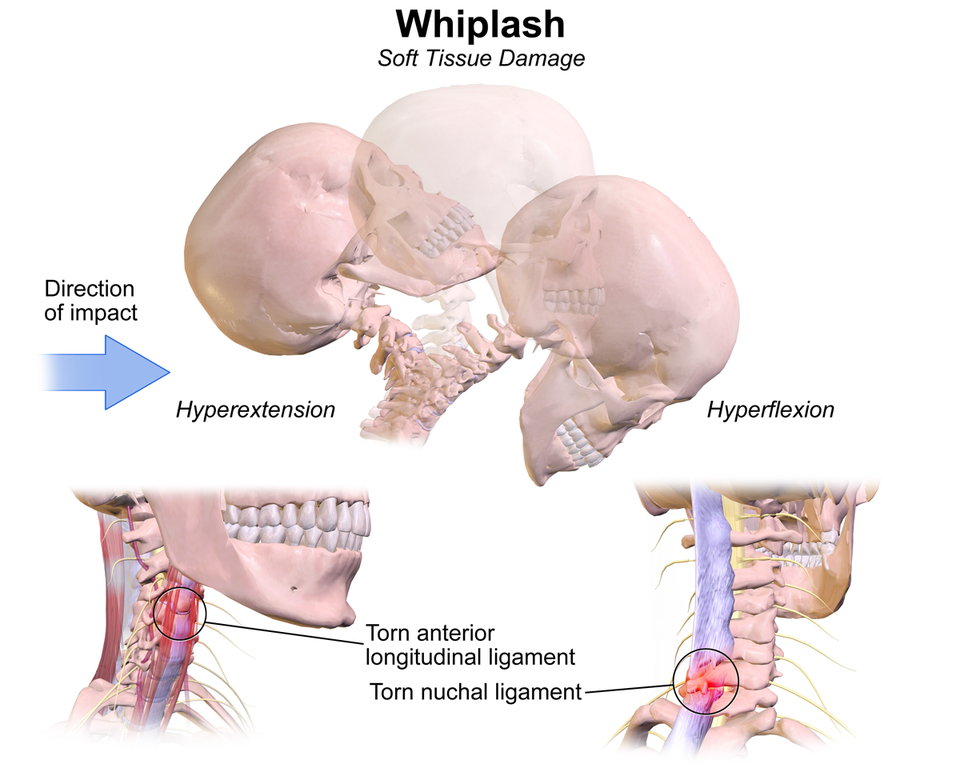Being involved in a car accident can be overwhelming, and injuries aren’t always immediately obvious. Recognizing the most common injuries that occur after a crash is crucial for timely treatment. Visiting an experienced auto injury clinic ensures you get the proper diagnosis and care needed for recovery. Understanding what signs to look for can make a significant difference in your health and well-being. Keep reading to learn about the top injuries to watch for after an auto accident and how professional clinics can help you recover effectively.
1. Whiplash: The Hidden Aftermath of Rear-End Collisions
After a rear-end collision, many individuals focus on obvious injuries like bruises or broken bones. However, one of the most common yet often overlooked injuries is whiplash. Picture a person sitting in a modern auto injury clinic, visibly discomforted. They are gently holding their neck, their muscles visibly tense as they try to soothe tightness and pain. Their head is slightly tilted forward with a subtle droop, indicating a persistent strain. The person’s face reflects discomfort, with brows furrowed and a worried expression as they try to move their neck.
In such a scene, the tension in their neck muscles is palpable. The area around the cervical spine looks strained, with the muscles appearing tight and knotted. The individual may be seated in a sleek chair, possibly with a cervical collar or neck brace prepared nearby, ready for assessment. The clinician, examining them, might observe limited range of motion and tenderness when palpating the neck. This tension is characteristic of whiplash, a sudden extension and flexion movement of the neck often caused by rear-end impacts.
Whiplash occurs when the force of a collision causes the head to whip back and then forward rapidly, stretching and damaging neck tissues. Its symptoms can include neck stiffness, pain, headaches, dizziness, and even blurred vision. The injury can be deceptively mild-looking on the surface but hide significant soft tissue damage beneath. Patients often underestimate the injury’s severity because they might not see immediate swelling or bruising.
Recognizing this injury early is crucial. Often, the initial pain can intensify over the following days, making timely intervention vital. At the clinic scene, a thorough examination might be performed, including assessment of muscle tension, joint mobility, and neurological function. Imaging tests such as X-rays or MRIs can help rule out more serious injuries, like fractures or nerve damage.
Addressing whiplash involves a combination of treatments. Rest, gentle stretching, manual therapy, and sometimes physical therapy designed to reduce muscle tension are common approaches. For some, pain management medications are necessary to alleviate discomfort. The goal is to restore neck mobility, reduce pain, and prevent chronic issues, which makes early diagnosis and treatment essential.
Understanding that whiplash can have silent long-term effects is important. If left untreated, it may lead to persistent pain or headaches. Therefore, anyone involved in a rear-end collision should seek professional evaluation—even if symptoms seem mild initially. Recognizing the signs and symptoms early can significantly impact recovery outcomes. For more details on navigating auto injury claims, check out our auto accident injury FAQ.
2. Head Injuries: Concussions and Brain Trauma
Sitting in a quiet medical exam room, a person gently holds their head with a confused or dazed expression. The background shows medical equipment like monitors and exam tools, emphasizing the clinical setting. After a car accident, head injuries can be subtle yet serious, demanding careful attention. Concussions and other forms of brain trauma are among the most critical injuries to recognize and address promptly.
Concussions often result from a blow or jolt to the head, causing the brain to move rapidly within the skull. This movement can stretch and damage brain tissue, leading to a range of symptoms that may seem mild initially but can escalate if untreated. Common signs include disorientation, dizziness, brief loss of consciousness, or confusion—symptoms that fit with the person’s dazed expression here. Sometimes, individuals feel foggy or struggle to remember what just happened, which could be a sign of a concussion.
More severe brain trauma can involve contusions, bleeding, or even diffuse axonal injury, which can significantly impair brain function. Symptoms may include severe headache, nausea, vomiting, blurred vision, or a stiff neck. Even if these symptoms are not immediately apparent, they can develop hours or days after the injury. This is why early medical evaluation is crucial after any head impact.
Recognizing a head injury involves noting behavioral changes, physical symptoms, and cognitive issues. If someone appears confused or unsteady, or if they complain of persistent headaches or visual disturbances, they should seek medical attention promptly. Diagnostic tools like CT scans or MRIs are often used to assess the extent of injury and guide treatment.
In the clinical setting, treatment focuses on rest and recovery, as well as monitoring for signs of worsening condition. In some cases, medications may be prescribed to manage symptoms, but avoiding physical and mental strain is essential. Education on warning signs helps individuals and families understand the importance of follow-up care and gradual return to normal activities.
Preventive measures are critical. Wearing seat belts, using properly fitted headgear during rides or sports, and avoiding risky behaviors reduce the likelihood of head injuries. However, accidents do happen, which underscores the importance of having a trusted auto injury clinic nearby that can perform thorough assessments and provide specialized care. For more detailed information on managing head injuries and ensuring proper recovery, visit our auto accident injury resources.
3. Spinal Cord Injuries: The Risk of Serious Back Damage
Lying on a hospital treatment table, the individual’s face tenses with discomfort as they clutch their lower back. Nearby, spinal imaging results display a detailed MRI scan, highlighting areas of concern in the vertebral column. Spinal cord injuries are among the most severe complications following a car accident, often resulting from high-impact collisions that cause the spine to twist, bend, or compress unexpectedly.
Back injuries can range from minor strains to devastating damage affecting the spinal cord itself. The force of a crash can cause vertebrae to fracture or dislocate, which may impinge on or sever the spinal cord, leading to partial or complete paralysis. Often, the initial pain and inability to move are immediate, but sometimes symptoms may be delayed, complicating diagnosis.
Recognizing the signs early is critical. If someone exhibits persistent back pain, numbness, weakness, or loss of bladder and bowel control post-accident, immediate medical evaluation is essential. Diagnostic imaging such as X-rays, MRIs, or CT scans provides vital insights into the extent of injury, determining whether the spinal cord is compromised.
The trauma to the spine doesn’t always involve visible fractures; soft tissue damage or disc injuries can also have serious consequences. A herniated disc or ligament tears might not be apparent without comprehensive imaging but can cause significant pain and nerve compression. These injuries require prompt diagnosis and tailored treatment to prevent long-term impairments.
Treatment begins with immobilization to prevent further damage, followed by interventions that may include surgical repair or stabilization. Physical therapy and rehabilitation are integral to recovery, aimed at restoring as much function as possible. Some injuries, unfortunately, result in permanent damage, emphasizing the importance of early assessment and aggressive management.
Preventing spinal cord injuries starts with safety measures like wearing seat belts, ensuring proper headrest positioning, and avoiding reckless driving behaviors. For those involved in accidents, seeking immediate medical attention—even if symptoms seem mild—is crucial. The sooner the injury is evaluated, the better the chances for effective intervention.
If you’re dealing with the aftermath of a car accident and suspect a back injury, visiting a trusted auto injury clinic ensures expert assessment and proper treatment. Early diagnosis not only alleviates pain but also minimizes the risk of permanent disability. For more information about comprehensive injury care, visit Americana Injury Clinic.
4. Chest Injuries: Bruises, Fractures, and Internal Damage
After a car collision, chest injuries are common but often underestimated. The image of a patient clutching their chest with a concerned expression highlights the urgency of recognizing these injuries promptly. The chest, protected by ribs and muscles, can still sustain significant harm during a collision, leading to bruises, fractures, or even internal damage.
Bruises, or contusions, occur when impact causes blood vessels under the skin to rupture, resulting in discoloration and tenderness. These are usually superficial but can be painful and indicate underlying tissue trauma. While minor bruises may heal on their own, persistent or severe pain suggests a deeper issue that warrants medical attention.
Fractured ribs are a more serious concern. They often result from a direct blow or a strong compression force during a crash. A fractured rib can be extremely painful, especially during breathing, coughing, or movement. Sometimes, the pain is sharp and localized, but in severe cases, fractured ribs can puncture surrounding tissues or organs, leading to internal injuries.
Internal damage is perhaps the most concerning type of chest injury following a car accident. The sudden deceleration and impact can cause damage to vital organs such as the lungs, heart, or major blood vessels. Internal bleeding or organ punctures may not be immediately apparent but can quickly become life-threatening if untreated. Symptoms may include severe shortness of breath, dizziness, or signs of shock.
Recognizing the symptoms early is crucial. Patients may have visible bruising, difficulty breathing, chest pain, or an irregular heartbeat. Any suspicion of internal injury requires immediate medical assessment, often involving imaging such as X-rays, CT scans, or ultrasounds to determine the extent of damage. A prompt diagnosis ensures that appropriate treatment, whether it involves pain management, stabilization of fractures, or surgical intervention, can be administered.
Given the complexity of chest injuries, it is vital to seek specialized medical care after an auto accident. Delaying treatment may worsen the injury or lead to complications. For those experiencing persistent chest pain, difficulty breathing, or unusual symptoms, consulting a healthcare professional at a trusted auto injury clinic is essential. To understand more about post-accident care and to ensure proper management of your injuries, visit this resource. Recognizing and addressing chest injuries early can significantly impact recovery and long-term health outcomes.
5. Pelvic and Hip Injuries: Common but Often Overlooked
After a car accident, injuries to the pelvis and hips can be surprisingly common yet easily underestimated. Many individuals focus on more obvious injuries like head trauma or broken limbs, but the pelvic region and hips are vulnerable to significant damage that requires prompt recognition and care. When a high-impact collision occurs, the force transmitted through the vehicle can cause the pelvis to fracture or sustain a dislocation. These injuries might not always be immediately apparent, especially if the patient is in shock or distracted by other pain. Sitting or lying on an examination table, patients often report persistent discomfort or pain localized in the pelvic or hip region. In such situations, detailed medical imaging, such as X-rays or MRI scans, becomes crucial in diagnosing the extent of injury. The pelvis is a complex structure composed of bones, ligaments, muscles, and connective tissues. Damage to any of these components can compromise stability, cause severe pain, and impair mobility. Hip injuries, including labral tears, fractures, or soft tissue strains, are similarly common after accidents. Because these injuries can sometimes mask symptoms of more severe trauma, they are often overlooked during initial assessments. Recognizing the signs—such as persistent pain in the groin, pelvis, or upper thigh, swelling, bruising, limited range of motion, or an inability to bear weight—is essential for proper diagnosis. Left untreated, pelvic and hip injuries can lead to long-term complications, including chronic pain, gait abnormalities, or joint instability. Medical professionals at trusted auto injury clinics are trained to identify subtle clues indicative of these injuries. They may recommend advanced imaging to evaluate fractures or soft tissue damage, ensuring no injury is missed. Treatment often involves a combination of rest, physical therapy, pain management, and sometimes surgical intervention for severe fractures or dislocations. Effective recovery hinges on early identification and a tailored rehabilitation program. If you experience persistent discomfort in your pelvic or hip area following a car accident, it’s critical to seek professional evaluation promptly. For more detailed guidance on managing injuries and navigating insurance claims, you can visit this resource. Recognizing and addressing pelvic and hip injuries early can prevent long-term disability and restore your mobility effectively.
What you need to know
Understanding the top injuries following a car accident empowers you to seek immediate medical attention at an auto injury clinic. Early diagnosis and proper treatment can prevent long-term health issues and promote faster recovery. If you’ve been involved in a collision, prioritize your health by consulting with experienced professionals to address any injuries promptly. Remember, timely intervention is key to a full recovery and peace of mind.
If you’ve experienced a car accident, contact Americana Injury Clinic today to get expert care for your injuries.
Learn more: https://www.americanainjuryclinic.com/#contact-form
About us
Americana Injury Clinic is a pain treatment clinic that specializes in treating work-related, sports, and motor vehicle collision injuries. With a team of experienced physicians and staff, Americana Injury Clinic is dedicated to providing the highest level of care to patients. The clinic focuses on providing comprehensive treatment plans that address each individual’s specific needs, and they work closely with patients to create a personalized recovery plan.




